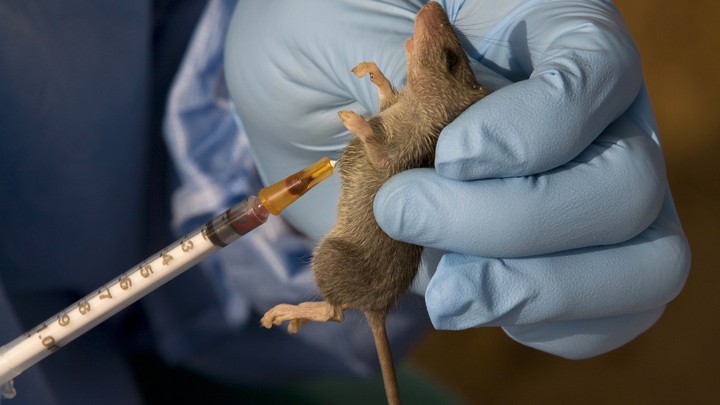News
Lassa Fever is in Lagos | Here’s How You Can Protect Yourself

An ecologist extracts a sample of blood from a Mastomys Natalensis rodent in the village of Jormu in southeastern Sierra Leone February 8, 2011. Lassa fever, named after the Nigerian town where it was first identified in 1969, is among a U.S. list of “category A” diseases — deemed to have the potential for major public health impact — alongside anthrax and botulism. The disease is carried by the Mastomys Natalensis rodent, found across sub-Saharan Africa and often eaten as a source of protein. It infects an estimated 300,000-500,000 people each year, and kills about 5,000. Picture taken February 8, 2011. To match Reuters-Feature BIOTERROR-AFRICA/ REUTERS/Simon Akam (SIERRA LEONE – Tags: HEALTH SOCIETY ANIMALS) – GM1E72F07HC01
Lassa fever cases and deaths have been reported across the country, and now it’s been revealed that a case has been recorded in Lagos.
Punch shared that the state’s Commissioner for Health, Akin Abayomi, revealed in a statement that a patient is currently in isolation at the Lagos University Teaching Hospital.
The situation is under control, Abayomi said, and everyone should remain calm and not panic.
He shared how people can prevent the disease, the most important part being community hygiene, as it is spread through rats.
Members of the public are further advised to avoid contact with rats, to always cover their food and water properly, cook all their food thoroughly, as well as block all holes in the septic tanks and holes through which rats can enter the house and clear rat hideouts within the premises.
Because Lassa fever can also be spread between humans through direct contact with the blood, urine, faeces, and other body fluids of a person infected with Lassa fever, it’s important that we wash our hands often, with soap and running water and hand sanitisers.
Health care workers treating those with Lassa fever should also be careful, the World Health Organisation advises.
Health-care workers caring for patients with suspected or confirmed Lassa fever should apply extra infection control measures to prevent contact with the patient’s blood and body fluids and contaminated surfaces or materials such as clothing and bedding. When in close contact (within 1 metre) of patients with Lassa fever, health-care workers should wear face protection (a face shield or a medical mask and goggles), a clean, non-sterile long-sleeved gown, and gloves (sterile gloves for some procedures).
Laboratory workers are also at risk. Samples taken from humans and animals for investigation of Lassa virus infection should be handled by trained staff and processed in suitably equipped laboratories under maximum biological containment conditions.
Again, there’s no cause for alarm. The disease isn’t air borne, and maintaining proper hygiene should keep one safe from it.





















